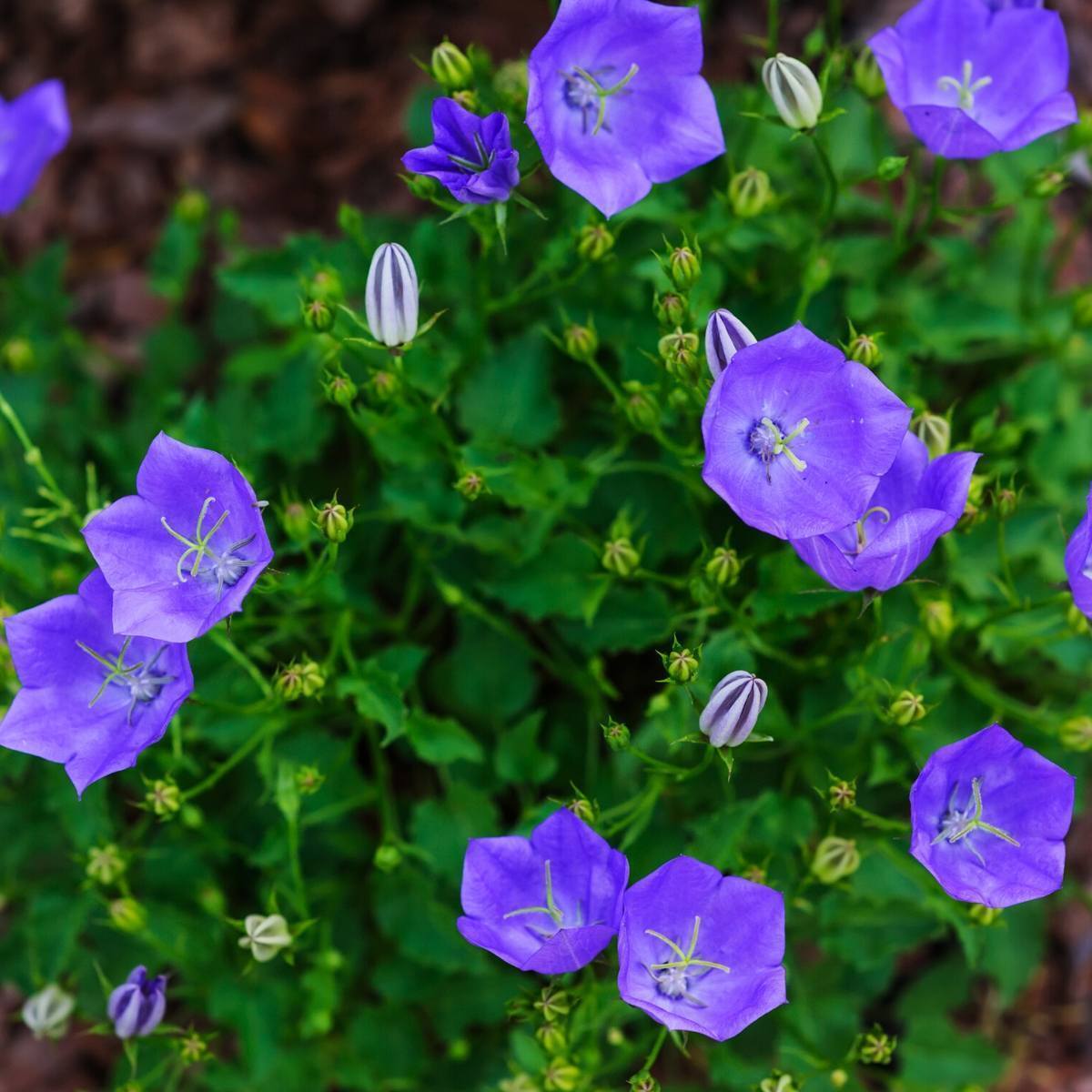
Companion Planting Companion planting, sometimes called intercropping, can be used to deter pests and improve yields.You can expect to receive approximately 400 seeds per packet of creeping thyme, but 150,000 Mother of Thyme seeds per ounce! An ounce of seed will cover about 500-600 square feet if you use the saltshaker method. If you have a large lawn or hillside you are wanting to plant, you might want to consider a bulk quantity of Mother of Thyme. You may want to have a "just in case" back up pack on hand in case something goes awry because we do sell out! If you rounded that up to 23' to be on the safe side and figured 8 feet per pack, you would need about 3 packs of seed. For example, if you are planting a path that was two feet wide made with one foot square pavers with a one inch gap that was eight feet long, you would have approximately 22'7" of linear space to plant. For planting a 1” space between pavers, we would recommend one packet per 6-10 feet. Thyme seed is very, very small so the amount of area you can sow really depends on your sowing method.

Note how quickly the plants fill in - in just 3 months! Check out the success of one of our customers in Oregon using this technique with Creeping Thyme. Transplant to a 4” pot or into your path once seedlings have established. Mist thoroughly when planting and be sure to keep moist as all times. Sprinkle the thyme seed on the surface and gently press into the soil – do not cover. You will want to fill your flats with sterile seedling mix and pat it down to firm the surface. You can purchase plug flats at your local nursery supply store or online. We use plug flats with 1" square cells (called "128's" for the overall number of cells per flat -see picture). When you use a plug flat, the roots of your seedlings stay separated making transplanting easier. What is a "plug flat"? It is basically a bunch of tiny pots all connected together for convenience. For that reason, we suggest starting your seeds in plug flats. Thyme seed is very small and needs to be kept moist while germinating – just one instance of drying out and that seed is dead. Once you have selected the variety of thyme you’d like to start, you have to make a decision on how you want to plant them. Another superb medicinal that can be used as a lawn is Common Yarrow.īut topping the list for the most desirable groundcovers and stepables are by far Creeping Thyme and Corsican Mint. After a few times of being mowed the plant will begin to dwarf making upkeep even simpler. As a groundcover, Roman Chamomile has the benefit of being able to endure being mowed with a lawnmower or weed whacker to keep it at lawn height. The daisy-like white flowers can be used to treat the symptoms of colds and to soothe the stomach and nervous system.
#Types of thyme ground cover full#
This wonderful perennial grows to a height of around 6" and can take either full sun or part shade. It forms a dense evergreen mat that smells deliciously like apples. Chamomile is one of the oldest herbs in continuous use since the time of the Egyptians, who dedicated it to the gods. We have a short list of favorite groundcovers that we have used successfully in our own gardens and have had positive feedback from customers in using them in their own gardens.įor many years we had Roman Chamomile (Anthemis nobilis) in the path of our Medicinal Garden.

They give "patio plant" a whole new meaning - not just a plant in a pot on the patio, but a part of the patio itself! The appeal of herbal groundcovers as a low maintenance alternative to lawns shows little sign of fading.

They work well between pavers, in low-use areas of the yard, or as a transition from the path to taller plants beyond.

Herbal groundcovers such as creeping thyme and Corsican mint make fragrant stepables for garden paths, walkways and herbal lawns. Groundcovers and stepables are an important part of the herb garden.


 0 kommentar(er)
0 kommentar(er)
